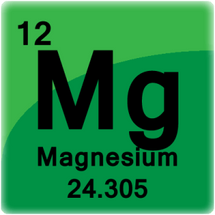Posted by Malcolm Green on 2nd Jan 2018
Germany sets new limits on human magnesium supplements
These are much lower than the levels we feed many of our horses !
Malcolm Green, Research Director, EquiFeast. 2 Jan 2018
“The maximum level for magnesium in food supplements consumed by adults (humans) should not exceed 250 mgs” – says the German Federal Institute for Risk Assessment(Nutraingredients.com Dec 20171). That is way less than the amount of magnesium added to most formulated horse feeds when scaled up for the difference in body weight.
For example, assuming a typical person weighs 75kgs (average of male and female figures from Wikipedia) and a horse 500 kg, scaling the 250 mg human dose up for the size of the horse would give a maximum amount of supplementary (added) magnesium of 1.67 grams for a 500 kg horse.
Let’s consider the sorts of horse feeds that have been around for years and are designed to be fed at about 3-4 kgs a day. In the UK these tend to have magnesium levels that range from 2 g/kg to 5 g/kg. Now the Germans are only looking at the ADDED (artificial) magnesium in the diet (as we do at EquiFeast) so let’s assume the natural level of magnesium in the raw materials making up the feed is 2 g/kg2.
| Total magnesium content per kg | Natural level per kg | Amount added per kg | Total added Mag from 3.5 kgs of feed |
| 2g | 2g | 0g | 0g |
| 3g | 2g | 1g | 3.5g |
| 4g | 2g | 2g | 7.0g |
| 5g | 2g | 3g | 15.0g |
So if 1.67 grams is a reasonable upper limit for humans why are we adding 3.5 to 15 grams a day to our horses’ diets? Especially when their grass and hay will almost certainly meet their scientifically determined requirements completely naturally.
Are feed balancers better? Well these are mostly fed at 250g or 500g a day so let’s look at three modern products from EquiFeast, plus a leading brand from one of the innovative early manufacturers of balancers and another one recommended for top level dressage horses (that can be fed at 500g to 1 kg a day).
| Product | Total magnesium content per kg | Natural level per kg | Amount added per kg | Total added Mag from manufacturers’ feeding rates |
| CoolCORE Mag-FREE (250g) | 1.9 | 1.9 | 0 | 0 |
| CoolCORE Lo-Mag (250g) | 3.5 | 1.9 | 1.6 | 0.4 |
| CoolCORE Mid Mag (250g) | 5.1 | 1.9 | 3.2 | 0.8 |
| Premium quality balancer3 (500g) | 6.0 | 2.0 | 4.0 | 2.0 |
| Extreme mag balancer3 (500g – 1kg) | 8.0 | 2.0 | 6.5 | 3.25 -> 6.5 |
So to recap, the maximum level in proportion to the
German recommendations for humans is 1.67 grams a day of ADDED magnesium. The
EquiFeast CoolCORE products are all comfortably below that however both of the
other products are comfortably above that. EquiFeast has never developed a
Hi-Mag version of CoolCORE because they have never found a horse that
benefitted from that amount of added magnesium during the “fine tuning”
process. It is interesting that these results are not dissimilar to the German
human recommendations.
EquiFeast also makes products to provide protein and energy to horses (MORE Condition, MORE Work and MORE Muscle). None of these have added magnesium in them either.
Humans versus horses
The German human recommendations are based on research into the amount of supplementary magnesium that is capable of causing diarrhoea. It is obviously not perfect to extrapolate from one species to another but in horses a level of 2.5 grams of added magnesium has been shown to have a similar effect on the brain as a dose of veterinary sedative4.
EquiFeast has conducted its own research on the impact of dietary magnesium on horses and has examined its database of thousands of horses that have gone through its “fine tuning process”. About half of the horses from the database seem to do best with zero artificial magnesium but the other half benefit from SMALL additions.
EquiFeast is not the only feed firm that believes that there
is little justification to add large quantities of magnesium to horse feeds.
Allen & Page don’t add any to their products and Dengie only add magnesium
to one of their extensive range.
There are more articles on magnesium in our articles section.
And videos on our YouTube channel.
2 Cereal based feeds will have lower natural magnesium levels than
this and high forage feeds may be a little higher naturally. Data sourced from Nutrient
Requirements of Horses, The National Research Council 2007.
3 These are estimates based on total magnesium figures supplied by manufacturers.
4 Dodd et al 2015. Journal of Equine Veterinary Science 35 (2015) 401-402.

